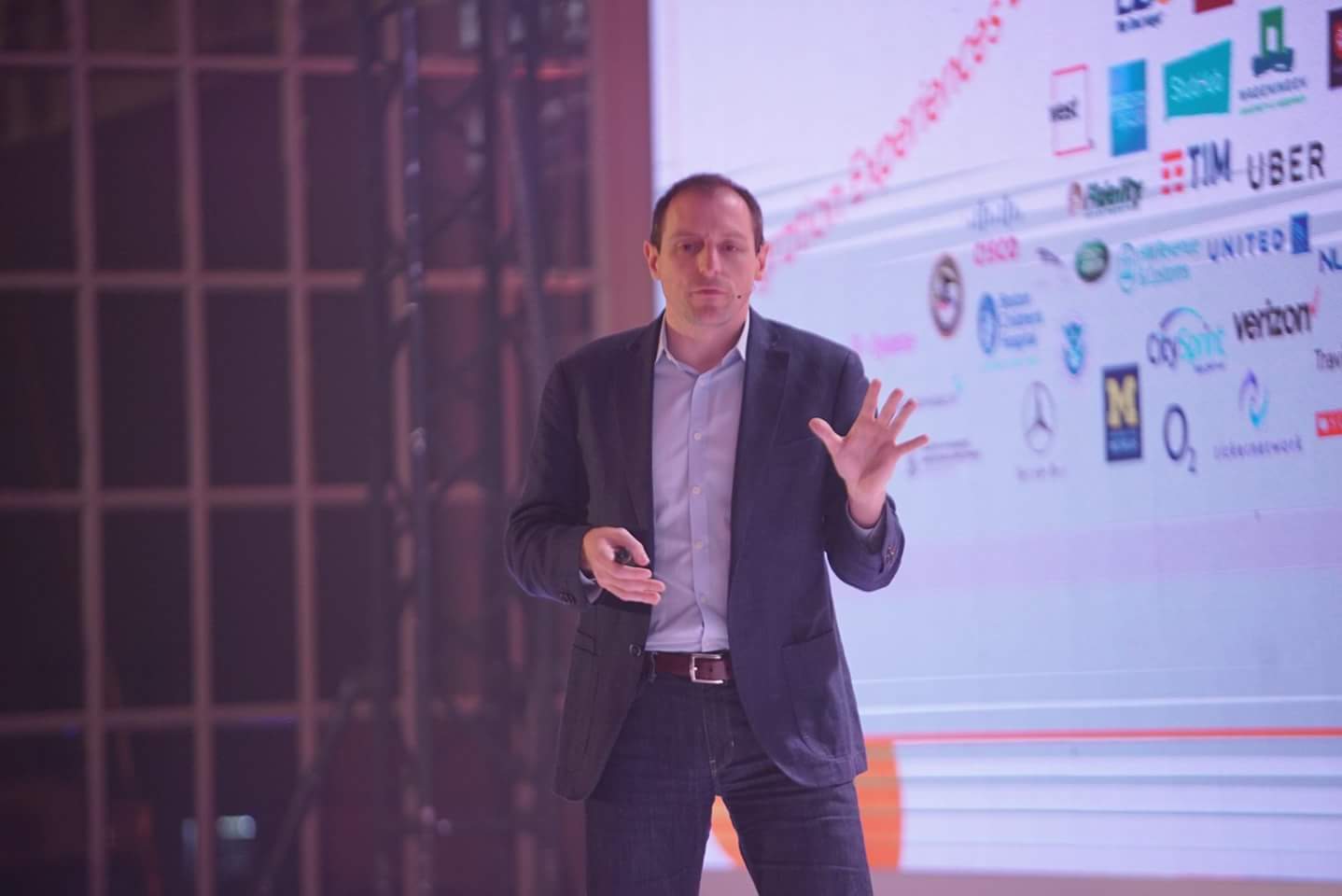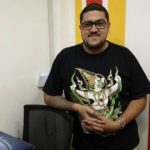Flashing lights, an atmosphere that was cool, both literally and figuratively, and people dressed to the hilt. You would assume at first glance that this was some fancy gala. Well, it is, sort of. This is WSO2Con Asia 2018.
In case you didn’t know what that is, WSO2Con is WSO2’s premier conference. Here, the company showcases the latest breakthroughs that they have carried out alongside customer stories of how WSO2 helped their companies grow and mature. Held on the 8th and 9th of August 2018 at the Hilton Colombo, WSO2Con Asia 2018 revolved around two keywords: Integration and Agile. So what did we learn on Day 01 of WSO2Con Asia 2018?
Integration is sexy!
This was the opening statement by Tyler Jewell, the relatively new CEO of WSO2. Tyler spoke about his experience in the middleware industry and also his work with Sanjiva Weerawarana – Founder, Chairman, and Chief Architect of WSO2. Tyler also proudly said that WSO2 also became a “teenager” as they turned 13. “We’re growing older and more mature”, Tyler explained. From what started with a mere 20 employees, WSO2 now employs over 500 individuals.
With that being said, Tyler got into the brunt of the matter at WSO2Con Asia 2018. How attractive and important is Integration? Tyler started off by explaining that WSO2 is the largest independent integration vendor in the market. That being said, he also emphasized that regardless of what software you’re building, you’re doing integration.
Tyler then spoke about Data and Scale. With the growth of AI, companies are scrambling towards extracting and understanding the data that they have in order to make industry-changing decisions. Bringing all this together are APIs. Essentially API’s are a key element of integration. In fact, Tyler noted that the Integration market is 33.9B USD.
All companies in the future are going to have to have software as a core competency. These are digitally-driven organizations. If your company fits this profile, you need to make sure that your developers are agile.
Tyler then gave a brief background on WSO2. They currently cater to more than 450 customers, have 1000s of deployments, 6 trillion transactions per year, and over 100k open source contributions per year.
Tyler also went on to talk about the 10-year long-term support that WSO2 provides. Here, any software that makes use of WSO2’s platform will have product support for up to 10 years. Tyler also spoke about WSO2’s own cloud-native programming language, Ballerina.
But did you know that Middleware is one of the biggest bottlenecks to becoming agile? It’s not about having fantastic technology. Rather, It’s also about having good people and practices. Tyler then spoke about their mission where they would help companies become as agile as they want to be. He went into technical details, covering topics such as the WS02 maturity model for agility, etc. Essentially all these would help you create better apps that are not dependent on each other.
Tyler also touched on Ballerina and the First Ballerina Con which happened in July 2018. Interestingly, a charitable contribution was done to the San Francisco Ballet in the name of Ballerina, making WSO2 the first-ever Silicon Valley company to make a donation to the school.
GO Digital or Go Home
“If we don’t go digital, then we’re going home”. That was what Jehan Mutaliph’s boss told him. Jehan, the Chief Digital Officer at MAS Holdings was on stage at WSO2Con Asia 2018 to talk about how MAS Holdings journey into the digital field.
Jehan gave a brief overview of the company and how they have gone from a basic apparel company to a tech apparel company. “Data plays a big role in their operations”, he explained. Speed and agility are two important factors, he added. What initially took a few months to deliver to the market, they are now moving on to delivering products within a few days.
Talking about the story about their life with WSO2, Jehan explained that they wanted to start with technology last. Rather, they decided to go with identifying a vision and culture, to defining the strategic objectives and outcome and defining value drivers.
Their digital strategy revolves around driving digital to the core and increasing growth by playing in the global digital economy. This starts off with the usual points such as increasing productivity, resource optimization, etc. rather than having a brand as a customer, they are now focusing on consumers as customers.
Jehan then spoke about the steps that the company took during its digital journey. This involved discovering new opportunities, assessing the situation, experimenting to find new solutions, and then running those solutions
There are challenges to running experiments. For example, there are limited data available. So you can’t exactly make the most accurate decisions. Then there are issues with Governance as well. Would other companies get your data? If so, what do you do then? Then you have the expectations put to you just because you’re running this new experiment. How do you cope with failure when it happens? So you also need to manage expectations.
Jehan emphasized that their journey was not only about engineers. They had to convince the higher-ups in the organization that going digital was a worthwhile move. In order to do that, they got entrepreneurs and evangelists to preach about the good things that come from going digital.
Having said all that; there’s always a “But”. No matter how visionary you are, there are always people who turn a blind eye to progress. In the end, Jehan said, it’s up to tech enthusiasts to evangelize digitization.
How to build an agile Enterprise?
This was what Asanka Abeysinghe, Vice President – Architecture, CTO Office, WSO2 was on stage to talk about. Asanka’s keynote at WSO2Con Asia 2018 seemed rather complex. Technical jargon was tossed at the audience who listened with eager looks on their faces. Asanka started off by introducing the Maturity Model for Agility, Reference Methodology for Agility, and Reference Architecture for Agility.
He spoke about the architecture patterns and gave a historical timeline of the layered and segmented architecture patterns. Then spoke about the layered architecture model used by WSO2. From there, he spoke about microservices, cell architecture, and cells, etc. Following that, Asanka spoke about cell gateways, side cards, adaptors, and ambassadors. He also briefly touched on He Reference Implementation.
Why go through all this? Well, quite simply, if you don’t have a proper environment, you can’t be agile. In conclusion, Asanka explained that Transformation is a journey without a destination.
Are you a software company yet?
This was the last keynote session for the day. It was delivered by Dr. Sanjiva Weerawarana – Founder, Chairman, and Chief Architect of WSO2. Sanjiva started off by stating that the future of everything is powered by software.
Digital transformation is the future of everything. A leading company can disappear in 2 years. So what does it take to evolve a business that can play in this new digital world? Well, for starters, it’s not about technology, it’s about people. To him the foundation of this is culture. Culture is the way you do everything, the way you work, think and talk.
An open culture means a person can experience passion, commitment, and authenticity. Rather than asking for permission to do something, you’re given free rein to do it and then seek forgiveness if something goes wrong. Thus you can learn from it. There’s also no rules, just context. Set the context first, then work backward and narrow it down.
Culture is all about people, Sanjiva explained. In order to work hard, you need flexibility. If you’re committed to winning for your company, individuals need to be given room to be visible. Culture also trumps strategy, Sanjiva said. If you have a bunch of people who know what they want to do and they have the tools to do it, and they have a learning culture, they will do it. There would be no need for a strategy.
Sanjiva’s next topic at WSO2Con Asia 2018 was entrepreneurship. When you see a problem, you can either complain, ignore or do something about it. As such, entrepreneurs are people who get bothered enough about a problem to make it into an opportunity. Essentially, entrepreneurs innovate.
Innovation is thinking of new ways to do the old things better or in an entirely new way. To survive, everyone must innovate, not just the top. His next word was Agility. This is the ability to constructively destroy the business. You also have to be dispassionately passionate. Don’t become old and jaded – things don’t change.
Sanjiva went on to talk about digital transformation. This is adopting disruptive technologies to make your customers, employees, and overall ecosystem happier, and better. He then spoke briefly on disruptive technologies. This includes cloud computing, AI, IoT, 3D printing, Blockchain, quantum computing, mixed reality, nanotechnology, etc.
Well, what if you don’t know that stuff.? Well, then you gotta learn. The days of educating yourself for a few years and then working till you retire are over. So how do learn? Well, you can learn almost anything online. You can get cocktail-level knowledge by doing an online course on something like Coursera.
If you’re a software company, you should always take control. Do not ever become a slave to your vendor. He also emphasized that you shouldn’t buy with an RFP or Request for Proposal, rather, you should use open source. Further, Sanjiva also emphasized that putting lipstick on the pig should be vehemently discouraged. This is where a cosmetic or superficial change is done to disguise the true nature of a product or service.
Thoughts on building a digital enterprise
The last item on the agenda for WSO2Con Asia day 01 was a panel discussion revolving around building an agile enterprise. The panel consisted of :
- Yosha Gupta, Digital Financial Specialist, and Financial Inclusion Consultant, IFC, World Bank Group
- Jigme Tenzing, Chief ICT Officer, Department of IT & Telecom, Royal Government of Bhutan
- Nisala Kodippili, Chief Information Officer, Nations Trust Bank
- Niranjan Prabhu, Chief Information Officer, and Director, Australian Catholic University
Moderated by Mifan Careem, Vice President – Solutions Architecture, WSO2, the discussion covered topics such as how digital transformation helped these organizations, challenges faced when making digital payment platforms, and the various governance issues that Governments might encounter when going digital.
Financial institutions too are challenged by telcos and Fintech. So you either have to innovate or collaborate with them. If you fail, you have to fail fast and then come back.
That brought an end to Day 01of WSO2Con Asia 2018
With a few questions from the audience, the panel discussion came to an end. This also signaled the end of Day 01 of WSO2Con Asia 2018. Next up? Day 02 of WSO2Con Asia, which promised to have more potential and more exciting sessions such as the ones that we witnessed.







GIPHY App Key not set. Please check settings